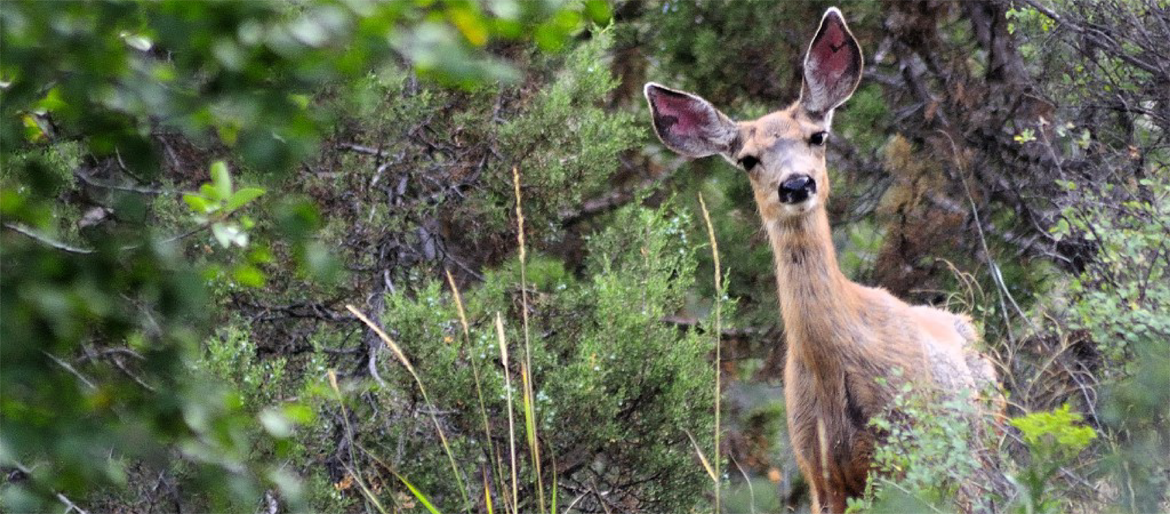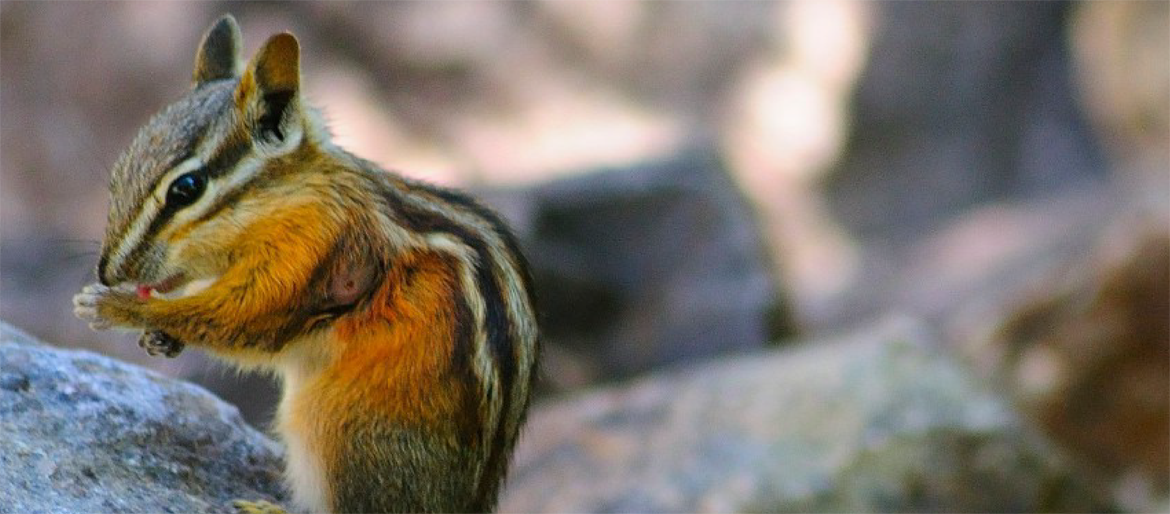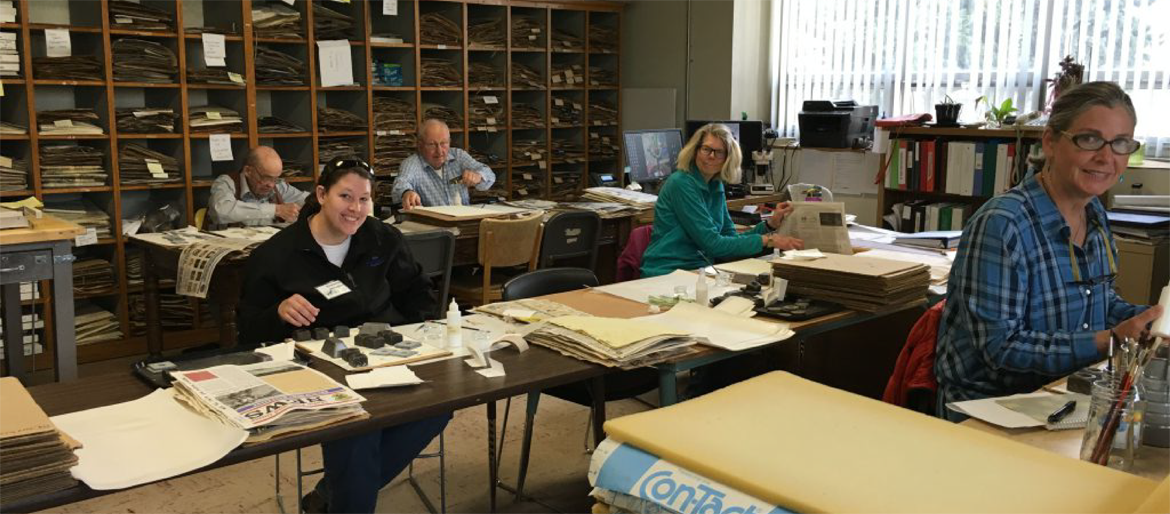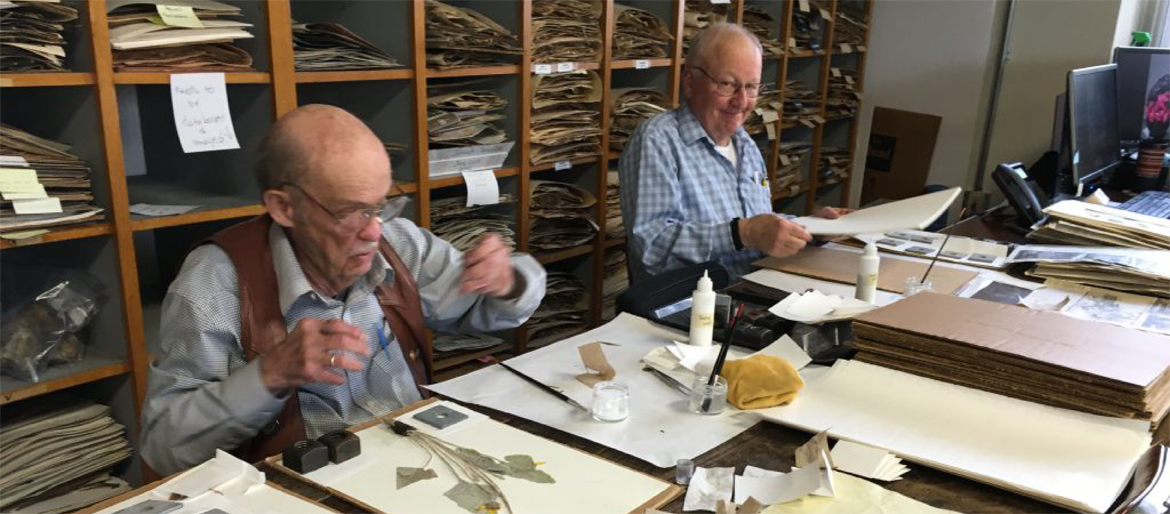LIFE SCIENCE DIVISION
The collections in the Life Sciences Division document and preserve records of the biodiversity of Idaho, the Pacific Northwest and beyond. Rapid changes in population, land use, and climate over the past 100 years have altered the distribution and abundance of organisms worldwide. Our collections document where and when different species of plants and animals lived in the region, and provide the framework to predict how those species’ distributions will change in the future.
Museum specimens also often preserve the organisms’ DNA and other chemical constituents allowing the study of the evolutionary relationships among populations and species, their diet, and the climate they experienced when alive.
The Life Sciences Division includes collections of plants, fungi, and lichens, invertebrates, and vertebrates. The Ray J. Davis Herbarium (IDS) is the most extensive collection in Life Sciences with over 70,000 cataloged plant specimens, 1650 lichen specimens, and smaller numbers of bryophytes (mosses and liverworts), and macrofungi (mushrooms). The small invertebrate collection includes several hundred specimens of Idaho insects. The vertebrate collections, consisting of approximately 6500 specimens, well represent the diversity of mammals, birds, amphibians, reptiles, and fish of Southern Idaho.

Nikki Frey
Interim Life Science Collections Manager
Office: Museum Building 127 921 S 8th Ave Stop 8096 Pocatello, ID 83209
Volunteer at the IMNH
The IMNH couldn't exist without the help of our dedicated volunteers. Volunteers gain opportunities for life-long learning and the satisfaction of knowing they are making a valuable contribution. Volunteers help out in many ways including serving as docents, teaching educational programs, helping in the office, processing and cataloging the collections, and serving on advisory boards and committees. No matter what you are interested in, IMNH can put you to work!
If you are interested, contact us at imnh@isu.edu or (208) 282-3168.
The Ray J. Davis Herbarium
The Ray J. Davis Herbarium (IDS) is a historically, regionally and nationally important collection of over 70,000 plant and lichen specimens, including 137 type specimens. The collection well represents the plant diversity of Idaho as well as providing reference material of North American and global plant families. Plant specimens from the U.S. make up 96% of the collection, with 70% from Idaho and surrounding states. Idaho specimens make up 48% of the collection, with Southeast Idaho especially well represented (32% of total specimens, 66% of Idaho specimens). Southeast Idaho is a geographically and biotically diverse region that includes the western extent of the Greater Yellowstone Ecosystem and the volcanic landscapes of the Upper Snake River Plain. IDS contains one of the largest collections of Southeast Idaho plants (22,409 specimens), and is thus one of the most important sources of information on the historical distributions of the regions’ plants and a growing resource for future research in this era of changing climate and landscape use. IDS receives frequent use for research, education and outreach. The plant and lichen collections are completely digitized and searchable via The Consortium of Pacific Northwest Herbaria (pnwherbaria.org), the Consortium of North American Lichen Herbaria (lichenportal.org), and the NSF-sponsored Integrated Digitized Biocollections Hub (idigbio.org).
The herbarium was established by Dr. Ray J. Davis in 1931. Davis recognized the need for regional flora and spent the next 20 years collecting plants throughout Idaho, and maintaining active loan and exchange programs with the leading botanists of the region, to document Idaho’s plant distributions and diversity. This effort built the collection to about 35,000 specimens and culminated in the publication of The Flora of Idaho (1952). Davis retired in 1965 and was succeeded by Dr. Karl E. Holte. For over 30 years Dr. Holte and his students conducted numerous biotic surveys in the region and grew the collection to ca. 50,000 specimens. In 2008, Dr. C.F. Rick Williams was appointed curator. The vascular plant collection has since grown significantly (ca. 2000 specimens per year) from processing and accessioning of vouchers from historical and contemporary biotic surveys. These collections are a rich source of information on the floral diversity and phenology of Southeastern Idaho dating from the 1930s to the present.
Online Collection Search
As part of the digitization project (SWITCH) a searchable online database is hosted by the Pacific Northwest portal at the University of Washington. Records from the Ray J. Davis Herbarium are identified with the prefix IDS loans of those collections should be directed to the director of Ray J. Davis Herbarium.
OTHER ONLINE COLLECTION RESOURCES
The IMNH Mammal Collection currently houses over 1200 catalogued specimens. The collection is comprised of skin and skull preparations of modern mammals. Specimens have been collected by ISU students, faculty, volunteers, and researchers.
Drs. Barry Keller, Edson Fichter and their students collected most the material as part of their research. Geographically, most of the specimens are from Idaho, with rodents and bats the best represented groups. The collection also has a number of specimens from Yellowstone NP, Texas, Arizona, Oklahoma, California, Utah and Wisconsin.
The collection is used for teaching mammalogy and zoology classes at IMNH and ISU. The collection provides a critical resource for taxanomic and genetic studies by mammalogists, paleontologists, archaeologists, and wildlife managers.
Herpetology is the study of reptiles and amphibians, including turtles, snakes, lizards, frogs, toads, and salamanders. The herpetology collection contains nearly 2,500 fluid-preserved specimens. It is one of the largest collections of Idaho herps and represents most of the 35 native species. The collection is predominantly from Idaho and surrounding states and includes specimens from the Idaho and Montana Natural Heritage Programs, Craters of the Moon National Monument, Yellowstone and Grand Teton National Parks, and the collection formerly held by the University of Idaho.
Dr. Allan Linder curated the collection until 1988. Dr. Charles R. Peterson is the current affiliate curator. Dr. Peterson and his students have conducted amphibian research and monitoring in Idaho and in Yellowstone National Park. He and Ted Koch of the U.S. Fish and Wildlife Service published a field guide to the amphibians and reptiles of Yellowstone and Grand Teton National Parks. The collection is databased and georeferenced and has been used to map amphibian and reptile distributions in Idaho.
To contact Dr. Peterson:
208-282-2922 or petechar@isu.edu
Ichthyology is the study of fish. The IMNH fish collection includes approximately 1000 fluid-preserved lots of specimens. These collections represent most of Idaho’s 68 native and introduced species, with a geographic concentration in Southeast Idaho. Both lake and stream habitats are represented and included collections from Bear Lake and the Snake River and its tributaries.
Specimens are mostly collections from ISU faculty and student researchers. The collection is under the care of Dr. Ernest Keeley, contact Dr. Keeley at (208) 282-3145 or keelerne@isu.edu
Ornithology is the study of birds. The collection is comprised of study skins, mounts, eggs, and nests totaling approximately 1300 catalogued specimens and associated data. Specimens have been donated or collected by private individuals, Idaho Fish and Game, U. S. Fish and Wildlife and researchers.
A large collection of mounted specimens and skins was donated to IMNH by Mr. Richard (Dick) Jeppson. Dick was a local high school teacher and taxidermist, who also provided service in a variety of ways to the museum.
This collection is a resource for exhibits, museum and university classes, local science teachers, wood carvers and artists. In addition, this collection provides a unique window to examine the changes in avian populations and their habitats in Idaho and the Intermountain West.




